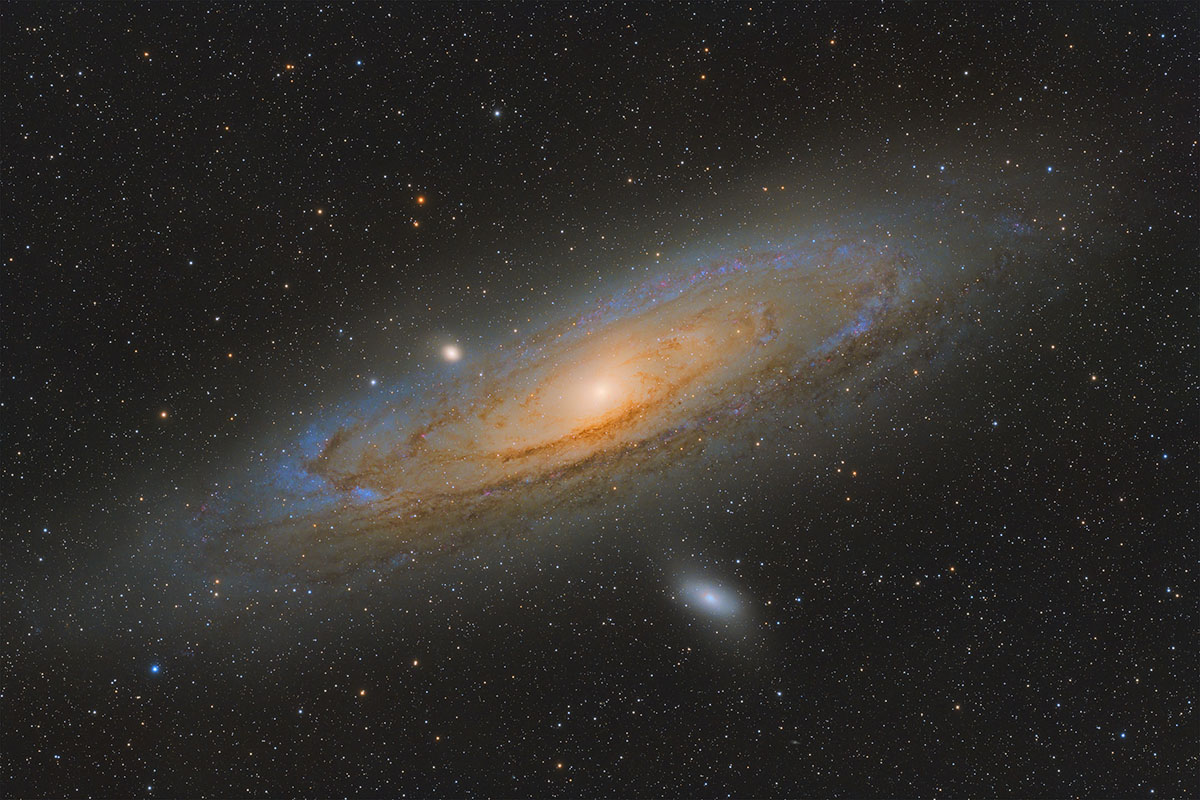
ThaiExcite
88/41 Kanlapapruek Road, Bangkae, Bangkae, 10160, Bangkok, ประเทศไทย
ติดต่อสอบถาม: 081-239-3299
อีเมล์: info@thaiexcite.com
URL: http://www.thaiexcite.com/-PREORDER-Askar-SQA85-f-4.8-Quintuplet-Petzval-Refractor-Telescope.html
*PREORDER* กล้องดูดาว Askar SQA85 f/4.8 Quintuplet Petzval Refractor Telescope
รายละเอียด
รายละเอียด
Askar SQA85 f/4.8 Quintuplet Petzval Refractor Telescope
The Askar SQA85 is a premium quality quintuplet air-spaced SD glass Petzval Astrograph that can do something that is often claimed but rarely achieved: produce pinpoint stars to the corners on a full frame sensor.
 Pinpoint stars in the corners on a full frame sensor camera taken with the Askar SQA85 by Mr. ZhuLiQun
Pinpoint stars in the corners on a full frame sensor camera taken with the Askar SQA85 by Mr. ZhuLiQun Superior star point performance
Quintuplet air-spaced lens design, including 2 pieces of SD glass. The central star point has an RMS radius of less than 1.6 μm, and the star point at the corner is less than 2.5 μm, showing a super-fine star point. It also has excellent full-field illumination and MTF data.
Petzval Structure
Integrated self-flattened design, supporting a 44mm full-frame image circle, no need for additional flatteners, and no need for additional calculation of the back focus. Between 40mm and 70mm connection distance, users can directly use it for shooting after the OTA is in focus.
 IC 1284 taken with the Askar SQA85 and a full frame sensor camera by Mr. ZhuLiQun
IC 1284 taken with the Askar SQA85 and a full frame sensor camera by Mr. ZhuLiQun Retractable Tube Ring
The dew shield is a retractable design that can be pulled out when used. It protects the lens from the impact of external and internal light and protects the lens itself.
Integrated Tube Ring
Enlarged hand screws allow users to open and close the tube ring without additional tools.
There are 6 M4 and M6 threaded holes on both sides of the tube ring, which are convenient for installing the base or dovetail plate and connecting different accessories. You can even set up another set of OTA for shooting
Integrated pair of tube ring sets, with a hollow design in the middle to reduce overall weight.
The handle on the top of the tube ring is slotted with a multifunctional finder base, which can be used to install astronomical accessories.
Finder Bases
On both sides of the focuser, there are two finder bases, which not only eliminate the need for disassembling when changing the position of the finder scope but also provide additional mounting positions for other astronomical accessories.
Dovetail Plate
Standard Vixen-style 290mm dovetail plate, which is easy to dismantle and install.
Diversified Photography Scene Applications
In addition to connecting to the astronomical camera for astrophotography, the SQA85 can also be connected to a mirrorless camera or DSLR camera for shooting.
360° Rotator
The rear of the focuser is equipped with a 360° high-precision rotator with a precision scale to allow the user to adjust and save the angle of ro-tation. It is also equipped with an enlarged locking screw for easy locking even under high loads.
 The Andromeda Galaxy taken with the Askar SQA85 and a full frame sensor camera by Mr. ZhuLiQun
The Andromeda Galaxy taken with the Askar SQA85 and a full frame sensor camera by Mr. ZhuLiQun Large, Rigid Dual-Speed Focuser
Dual-speed rack-and-pinion large 2.8-inch rigid focuser, which can be compatible with most motorized focusers on the market. The focusing travel is 32 mm, and the focuser tube is engraved with high-precision scales. The entire focuser barrel is CNC machined with an anti-reflective internal design and matting paint, providing extra measures to eliminate stray light.
Read End Adapters
The end of the SQA85 is equipped with a variety of adapters, all of which are toothed and ribbed, making it easy to rotate manually without slipping. The adapters are available in sizes M68, M54, and M48 and can be used to attach various accessories, such as full-frame cameras.
All Metallic Handle (optional)
85mm all-metallic handle can be purchased separately for easy use.
Heightening Section (optional)
20mm all-metallic heightening section can be purchased separately and is available to further minimize the risk of telescope collision damage during equatorial mount operation and to create more space at the bottom of the OTA to accommodate different connecting devices.
MTF Chart
The modulation transfer function (MTF) is a quantitative description of the clarity of the image (including resolution and contrast) of an optical lens. The vertical axis is the MTF value, and the horizontal axis is the distance from the center of the frame to the edge.
In the two sets of curves corresponding to low and high frequencies, even at the edge of the full frame the sagittal lines and sagittal lines distance of the SQA85 lens remain very small, and at the low frequency of 10LP/mm, it is higher than 0.9 overall, showing the high resolution and sharpness of the SQA85.
Relative illumination
Relative Illumination (RI) represents the combined effect of light loss and attenuation at the corners of the lens, and the RI curve illustrates the change in illuminance (%) across the imaging range on the sensor. Illumination variations can adversely affect the image. The vertical axis means different percentages of example illumination intensities, and the horizontal axis is the distance from the center of the frame to the edge.
The SQA85 guarantees a high illumination of about 85% even at the edge of the full frame, minimizing vignettings.
Spot Diagram
The imaging quality of the optical system can be evaluated by analyzing the distribution of the spots on the spot diagram.
The SQA85 has a central star point with an RMS radius of less than 1.6 μm, and the star point at the corner is less than 2.5μm, showing very small star points.
ZYGO Objective Chart
The ZYGO interferometer is internationally recognized as a more authoritative instrument for testing optical lens quality, and the SQA85 test results show great star quality.
Specifications
- Aperture size: 85mm
- Focal length: 408mm
- Focal ratio: f/4.8
- Objective lens: Quintuplet petzval APO (including two pieces of SD glass)
- Total length:
- 403mm (when the dew shield is contracted)
- 439mm (when the dew shield is stretched)
- Format specifications: Full-frame
- OTA weight: 3.64kg
- Gross weight (including tube ring and dovetail plate): 4.62kg
- Rear-end thread type: M48/M54/M68 adapters
- Rear-end connection distance: Support 40-70mm range (Recommended connection length is 55mm)
What's in the Box
- 1x SQA85 OTA
- 1x Oxford cloth case